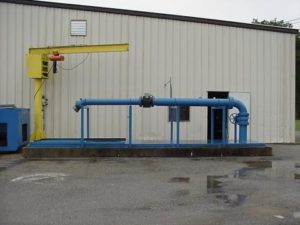Have you ever heard that water and electricity don’t mix? If so, then the title “submersible pump motor” must sound like a bad idea. However, it is a very common application for electric motors  in a variety of industries. Given the fact that the motor and most of the power cables are under water or something similar to water, your approach to acceptance criteria may need to be tweaked a little from your normal acceptance criteria for electric motors designed to operate in dry environments. Manufacturer’s recommended guidelines for continued operation of submersible pumps/motors include very broad tolerances which would suggest trending as a preferred approach to evaluating insulation integrity and reliability.
in a variety of industries. Given the fact that the motor and most of the power cables are under water or something similar to water, your approach to acceptance criteria may need to be tweaked a little from your normal acceptance criteria for electric motors designed to operate in dry environments. Manufacturer’s recommended guidelines for continued operation of submersible pumps/motors include very broad tolerances which would suggest trending as a preferred approach to evaluating insulation integrity and reliability.
Unlike more standard applications of motors where access to the motor connection box is possible for troubleshooting, access to the motor connection box of a submerged pump/motor becomes difficult, if not impossible. This dramatically increases the importance of sound quality control testing of the motor and power cables separately prior installation. Submersible pumps are always subject to condensation within the pump seals and water jacket. The fluid surrounding the cables and insulation creates a vast parallel conductor which lowers the overall insulation resistance-to-ground and substantially increases the overall capacitance-to-ground. The resistance-to-ground values often do not reach the minimum values allowed by the IEEE Standards.
Finally, the Submersible Wastewater Pump Association (www.SWPA.org) suggests that a new motor installed in a wet well with cap and cable assembly installed can go as low as 2Mohms to ground for continued operation. As always experience and historical comparison should be guiding factors in your decision as to when low is too low.